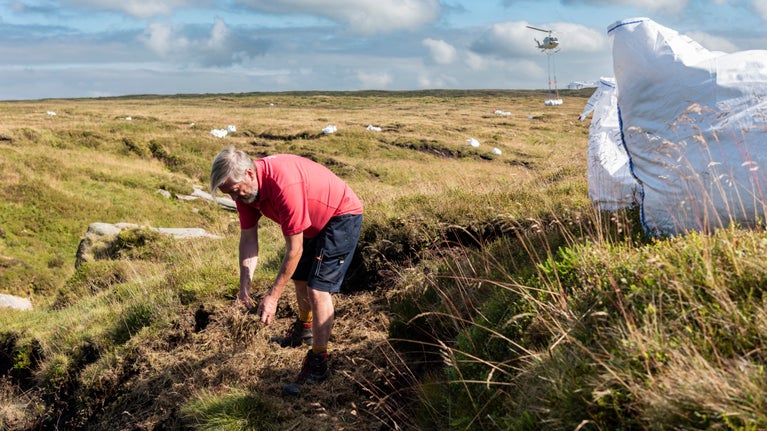Powys
Abergwesyn Common
We’re restoring over 6,600 hectares of peatland in the Cambrian Mountains, which has been damaged by fires and peat cutting. We’re doing this to protect wildlife, improve water storage and help tackle climate change.
We’re working with the Elenydd-Mallaen Peatland Partnership, local contractors and commoners, with support from the Welsh Peatland Sustainable Management Scheme, the National Peatland Action Programme and Starling Bank.
Techniques like aerial mapping, hagg re-profiling and sphagnum planting are helping to reduce erosion, improve water quality and lower the risk of downstream flooding. These efforts will also reduce carbon release, boost habitats for species like curlew and make the landscape more resilient to fire and drought.








